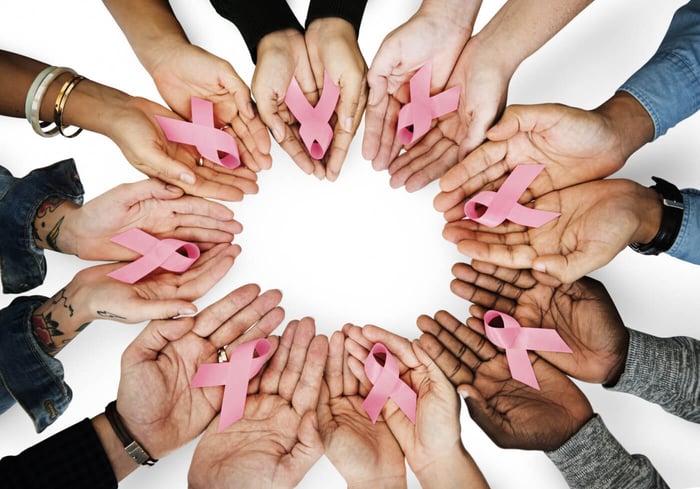Written by Lauren James Budhu
What is synonymous with the fall season? Pumpkin spice lattes (also known as PSLs), plaid, and boots might come to mind. However, something else one might think of is the color pink, which reflects the important annual campaign that takes over October: Breast Cancer Awareness Month. Many across the world take to the streets wearing every shade of pink imaginable to raise money for breast cancer research.
Breast cancer is characterized by abnormal cells that grow and invade healthy cells in the breast. It starts as a group of cells that can then invade surrounding tissue and metastasize to other areas of the body. It is a disease that affects more than 281,550 people each year, with more than 41,000 annual fatalities, according to the National Cancer Institute. Aside from skin cancer, breast is one of the most common cancers in American women. Yet even though so many are affected by the disease, death rates have been declining since the 1990s due to better screening, early detection, increased awareness, and better treatment options.
Screening and early detection includes doing monthly breast self-exams and scheduling regular clinical exams and mammograms. It’s important to be familiar with how your breasts look and feel, reporting any changes to your doctor. Annual mammograms should start at age 40, but possibly earlier if cancer runs in the family.
If you find yourself diagnosed with breast cancer, you might wonder what actually caused it. Unfortunately, no one knows the exact cause. What is known is that it is always caused by damage to a cell’s DNA. People can have certain risk factors of breast cancer that can be avoided (like drinking alcohol), while others can’t (such as having a family history of breast cancer).
Do you want to help others with breast cancer? Consider donating now or partnering with the National Breast Cancer Foundation, starting your very own fundraiser, or participating in a nearby Race for the Cure walk. Something else you can do is give a HOPE Kit to a loved one diagnosed with cancer, or help prepare or deliver kits locally.
Let’s help end breast cancer together!
By Lauren James Budhu


















